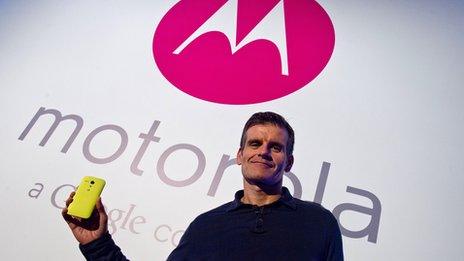Lenovo completes Motorola takeover after Google sale
- Published
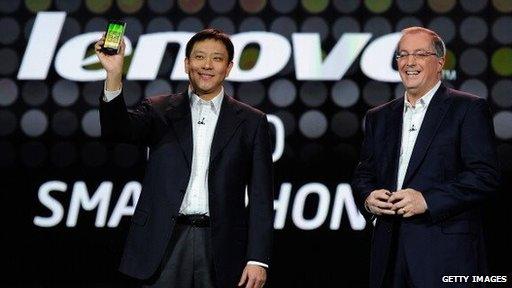
Lenovo already had a successful handset division of its own ahead of the takeover
Lenovo has completed its takeover of Google's Motorola Mobility division.
The acquisition gives the Chinese firm control of the unit's Moto and Droid-branded handsets as well as its 3,500 employees, 2,800 of whom are based in the US.
Lenovo said the deal made it the world's third bestselling smartphone-maker after Apple and Samsung.
That knocks its country-mate Xiaomi back down into fourth spot, based on data from two, external market research reports, external.
Lenovo stated that a total of 100 million mobile devices were on course to be shipped from its existing mobile phone business combined with that of Motorola's over the current fiscal year, which ends in March.
Little overlap
Motorola has found recent success with its "budget" Moto G models. The original version, released last year was the bestselling phone in the business's history.
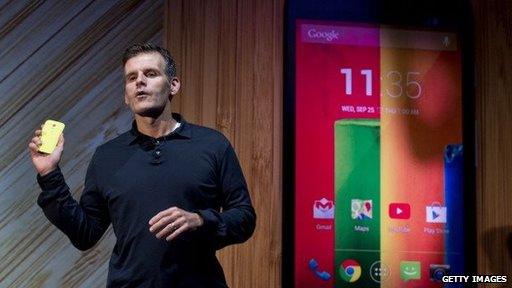
The Moto G smartphone has helped reinvigorate Motorola's 86-year-old brand
More recently it has also entered the wearables sector with the Moto 360 smartwatch, and announced its first Nexus device - a 6in (15.2cm) "phablet" marketed by Google, which will be one of the first phones to offer the Android 5.0 operating system.
Lenovo is the world's bestselling PC maker, a position it attained after the takeover of IBM's personal computer business in 2005.
Its smartphones are already big sellers in Asia and the Middle East, but they have not been sold in North America and Western Europe.
While Lenovo and Motorola handsets do compete for sales in India, there is little overlap elsewhere between the two divisions at this point.
"We're now planning to introduce Motorola-branded products back into China," Aymar de Lencquesaing, Lenovo's president of Europe, the Middle East and Africa, told the BBC.
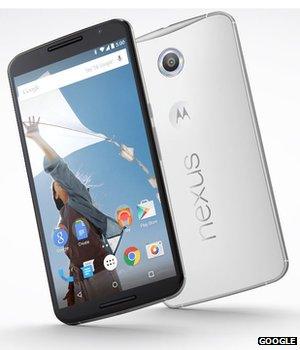
Motorola announced the Nexus 6 shortly before the takeover was completed
"But right now what we intend to do is leverage the stronger brand in each particular market.
"For the most part, think of the developed mature world - that's going to be Motorola-driven. Emerging markets will be Lenovo-driven.
"Some markets will overlap and over time nothing says that in any given market we couldn't have a dual brand strategy. But, let's put it this way, it's probably smarter for us right now to walk before we run."
He ruled out cutting jobs at Motorola and confirmed that the division would remain headquartered in Chicago.
'Quality phones'
Lenovo had previously stated that one of the reasons it bought the division, external for $2.9bn (£1.8bn) was to take advantage of Motorola's existing relationships with network operators in North America and Europe.
One analyst said that this could offer a way to launch Lenovo-branded handsets in those regions if the company later decided to make the move.
"Lenovo has proven it can manufacture quality phones and it is already well known as a PC brand in Europe and the US," said Ronan de Renesse from the telecoms consultancy Ovum.
"So, it doesn't have the cheap aspect to its brand that some of the other Chinese manufacturers have to deal with."

Motorola's brand has been updated to take account of the acquisition
Mr de Lencquesaing added that a nearer-term advantage to the tie-up was that Motorola would benefit from his company's supply-line efficiencies.
The takeover does not include Motorola Solutions, which makes communications equipment for utility and emergency workers. The two Motorola businesses formally split in 2011.
Google paid $12.5bn to acquire Motorola Mobility in 2012. It said the key motivation for the deal was the firm's patents, which it is keeping hold of.
- Published15 October 2014
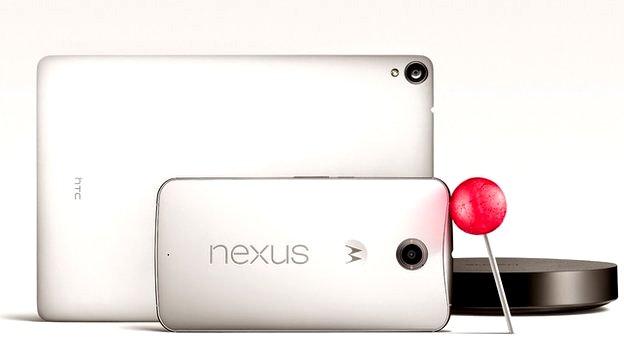
- Published5 September 2014
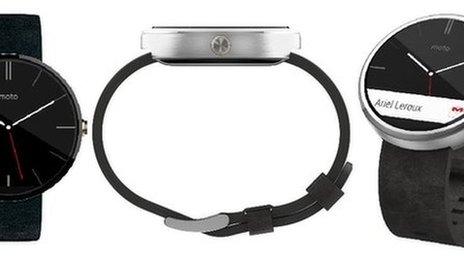
- Published30 January 2014
